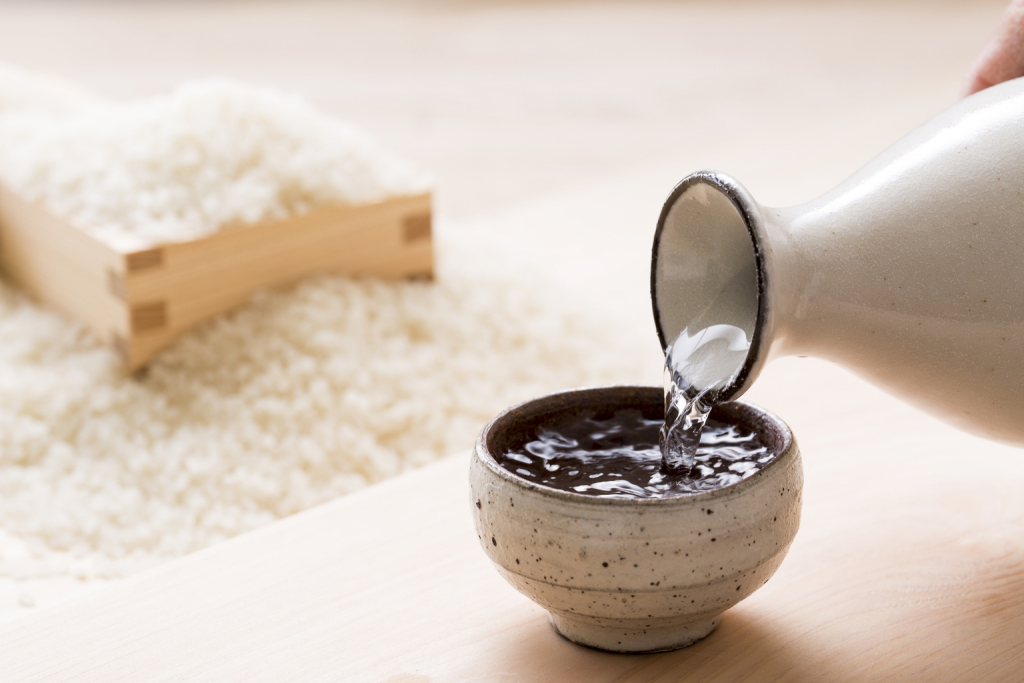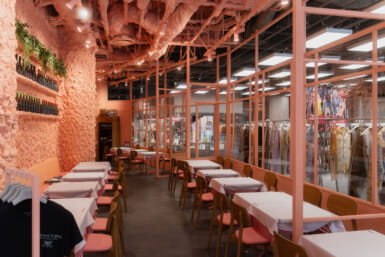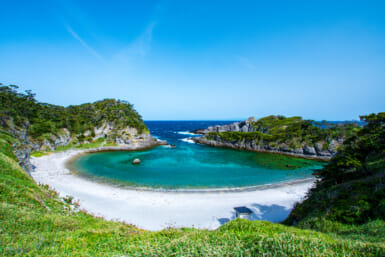A look into the history, culture, and science of Japan’s national drink.
By Sami Kawahara
I check the year it was bottled, the region it’s from, and confirm which climate and soil type yields the best harvest for the terroir—all before taking my first sip. As a California native, this all seems like a typical Napa Valley tasting room process.
But I am not in the vineyards of Northern California, nor am I at a Bordeaux Château. I am in rural Japan, visiting the rice fields of Nechi Valley and the mountains of Nada. I am here to embark on a journey that will, I hope, lead me to discover and understand the complexities of sake.
But what exactly is sake? The answer is not so simple, and understanding the drink and all of its elements may seem an impossibly difficult task. But on my exploration of the sake industry, I felt warmly embraced, realizing this alcohol was produced in a pure and straightforward way, while offering so many unique layers for tasting. It’s something you can explore freely and develop your own palate for, without the intimidation factor.
“Sake is like a ski slope that has not yet been skied on. Fresh tracks where you can lay down your own path,” says Beau Timkens, a leading American sake expert. “There’s not a lot of people out there telling you what to drink or telling you this is good and that is not.”
As a judge at the world renowned IWC sake competition, Timkens was able to see firsthand the strong differences between Japanese and Western palates. When given a flight of sake to judge, on a 100-point scale, a Japanese judge would rate one sake a 55 while a Western judge would rate the same sake an 85.
“The Western palate is very direct, very big. We don’t do well on nuance and we are big on impact. More subtle sake is what the Japanese palate prefers,” Timken observes. “Although now we are starting to see the younger generation of both Japanese and Western palates get bigger and prefer more direct flavors.”
On the road
Even the top judges and experts seem to have different ideas of what makes a great bottle, and this gave me the courage to go deeper into the industry and to find out about more than just sake production. So, I made my way out of Tokyo and visited two breweries in the quiet countryside of Japan.
There are two distinct ways sake is made in Japan—industrially and agriculturally. Wanting to see both first-hand, I hopped on the Shinkansen and went to Niigata prefecture first, to see an agriculturally produced sake at Nechi Otokoyama, then south to Nada, in Hyogo, to see industrial production at Sakura Masamune.
“Sake is like a ski slope that has not yet been skied on. Fresh tracks where you can lay down your own path”
Sake, better known of course as nihonshu in Japan, is made of only four ingredients: rice, water, koji mold, and yeast. With such basic elements, each resource must be carefully selected.
Yoshiki Watanabe, sixth generation head brewer at the Nechi Brewery in Niigata, has a unique philosophy that earned him a number of IWC medals and a 2010 Sake of the Year trophy. Watanabe’s brewery, founded in 1868, uses a self-sustaining production model, growing its own rice near the brewery. Watanabe strongly believes that the “essential value of sake is producing local sake with sake rice made in its local land.” In 2003, Watanabe began growing rice specific to fitting Niigata’s wintry climate: this rice matures and is ready for harvest early.
After enjoying an afternoon tea in his traditional tasting room, we headed outside to explore the location of his fields. Nechi Valley, home to acres and acres of Watanabe’s rice, is perfectly placed between the Sea of Japan and rocky Mt. Amakazari on the border of Nagano, allowing winds to blow from the sea over the fields by day, and in the opposite direction by night. This, Watanabe says, is a perfect combination to help rice plants fight off insects and diseases without the need for pesticides.
Fresh water snakes down Mt. Amakazari, and streams feed the budding fields; since sake is made up of 80% water, it is even more important. Nutrients in the water feed the yeast cells that take care of fermentation. Therefore, the yeast’s performance is affected by the nutrients it feeds on. In Nechi Valley, the water is soft yet rich in calcium and minerals, resulting in a smooth, subtle and clear sake.
The Nada district, producing 30% of all of Japan’s sake, uses harder water, containing a lot of phosphorous, potassium and calcium. This allows fermentation to occur quickly and builds a solid structure to the sake. Sakura Masamune in Nada, the second stop on my brewery tour, uses resources developed over a rich, 400-year history. Mr. Yamamura, 11th generation head brewer, explains that this hard water, called “Miyamizu,” was the discovery of the 6th generation head brewer, in 1840. It is a well-known water in sake production circles, and used exclusively for brewing in Nada. Sakura Masamune also produces Yamada Nishiki rice, the most popular specialized rice for sake brewing. This “King of Rice” thrives in the warmer climate of Nada, ripening slowly and developing complex flavors.
Although Sakura Masamune uses local resources, the integration of growing and brewing was very different from Nechi. At the industrial brewery almost an hour away from the rice fields, there is a multi-story factory building across the street from a gift shop, café, museum, and restaurant complex. After a kaiseki lunch, it was time for my white lab coat and hair net to investigate how the bottles of sake surrounding me were made.
To be continued . . .
Image: Kazaoka / Shutterstock.com









